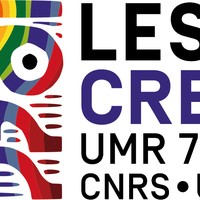Deprecated: strpos(): Passing null to parameter #1 ($haystack) of type string is deprecated in /var/www/html/themes/JaapKunstFoundation/view/omeka/site/item/show.phtml on line 27
Deprecated: strpos(): Passing null to parameter #1 ($haystack) of type string is deprecated in /var/www/html/themes/JaapKunstFoundation/view/omeka/site/item/show.phtml on line 54
Female chorus with idiophones (sua-sua)
- Edited Title
- Archivist's Original Title
- Original description
- Time duration
- Recording date of the original material
- Acquisition Date
- Population
- Place of the cultural origin
- Country Name
- Recording place
- Resource Language
- Comment
- Archivist Category
- Recording context
- Collector
- Name of original Collection
- Collection source citation
- Related material
- History of ownership
- Holding Institution of Original Materials
- Licensing Institution
- Accessing Institutions
- Copyright Information
- Copyright Notice
- Physical format
- Preservation State of Physical Object
- Original item number
- SEAH Identifier
-
en
Sua-sua
-
en
Female chorus with idiophones (sua-sua)
-
fr
Chœur féminin et idiophones (sua-sua)
-
id
Kor wanita dan idiofon (sua-sua)
-
en
Unpublished sound recordings from the Bugis, Makassar, Pamona, Tolaki, Toraja Sa'dan and Toraja Mamasa populations on the island of Sulawesi (south and central Sulawesi) (by Dana Rappoport & Serge Serafini 1991, Dana Rappoport 1993-2015)
-
fr
Enregistrements sonores inédits réalisés sur l'île de Sulawesi (sud, centre), auprès des populations Bugis, Makassar, Pamona, Tolaki, Toraja Sa'dan, Toraja Mamasa (par Dana Rappoport & Serge Serafini 1991, Dana Rappoport 1993-2015)
-
id
Rekaman yang dibuat di pulau Sulawesi (Sulawesi Selatan dan Tengah) di antara masyarakat Bugis, Makassar, Pamona, Tolaki, Toraja Sa'dan dan Toraja Mamasa (oleh Dana Rappoport & Serge Serafini 1991, Dana Rappoport 1993-2015).
-
en
00:03:16
-
en
1991-09-24
-
en
2011
-
en
Tolaki
-
en
Ambekairi (Kec. Unahaha, Kabupaten Sulawesi Tenggara)
-
en
Tolaki
-
id
Kor wanita diiringi seperangkat perkusi dan instrumen lainnya: wuwuho, seruling enam lubang dalam diatonis D, bijih-bijih nggae atau gongallima (garpu bambu - ngae artinya tangan - ada dua jenis bijih-bijih: baik tangan (nggae) , atau dengan mulut (mbondu), dimba-dimba (sitar setengah tabung yang dipukul dengan tongkat, panjang 1,6 m), 2 pasang tuundu (bambu dipukul di tanah secara bergantian) dan ngganda (alat musik perkusi yang sudah langka, lonjong, dengan seutas tali di kedua sisinya dan sebuah jembatan kecil: kedua tongkat itu mengenai senarnya)
-
fr
Choeur de femmes accompagné par un ensemble de percussions et autres instruments: wuwuho, flûte à six trous en ré diatonique, ore-ore nggae ou gongallima (fourche bambou - ngae signifie main - il ya deux types de ore-ore: soit à main (nggae), soit à bouche (mbondu), dimba-dimba (cithare semi-tubulaire frappée à l'aide d'un bâton, 1,6m de long), 2 paires de tuundu (bambous frappés à terre alternativement) et un ngganda (instrument de percussion déjà rare, oblong, avec une corde de part et d'autre et un petit chevalet: les deux baguettes viennent frapper la corde)
-
en
Women's chorus accompanied by a set of percussion and other instruments: wuwuho, six-hole flute in diatonic D, ore-ore nggae or gongallima (bamboo fork - ngae means hand - there are two types of ore-ore: either hand (nggae), or with mouth (mbondu), dimba-dimba (semi-tubular zither struck with a stick, 1.6m long), 2 pairs of tuundu (bamboos struck on the ground alternately) and a ngganda (already rare percussion instrument, oblong, with a string on either side and a small bridge: the two sticks strike the string)
-
en
Music (Vocal and instrumental)
-
en
Field recording
-
en
Indonesia, Sulawesi (South, Central, Eastern), 1991. D. Rappoport, S. Serafini
-
en
Archived at CREM, CNRS in 2011 by D. Rappoport
-
In Copyright. Non-Commercial Use Permitted
-
For any use, please contact the CREM-LESC (CNRS, Nanterre University, France): crem.lesc[at]cnrs.fr ; See information at https://archives.crem-cnrs.fr
-
en
Digital Audio Tape
-
en
original
-
en
CNRSMH_I_2011_015_011_04
-
en
SEAH_CNRSMH_I_2011_015_011_04
- Media





